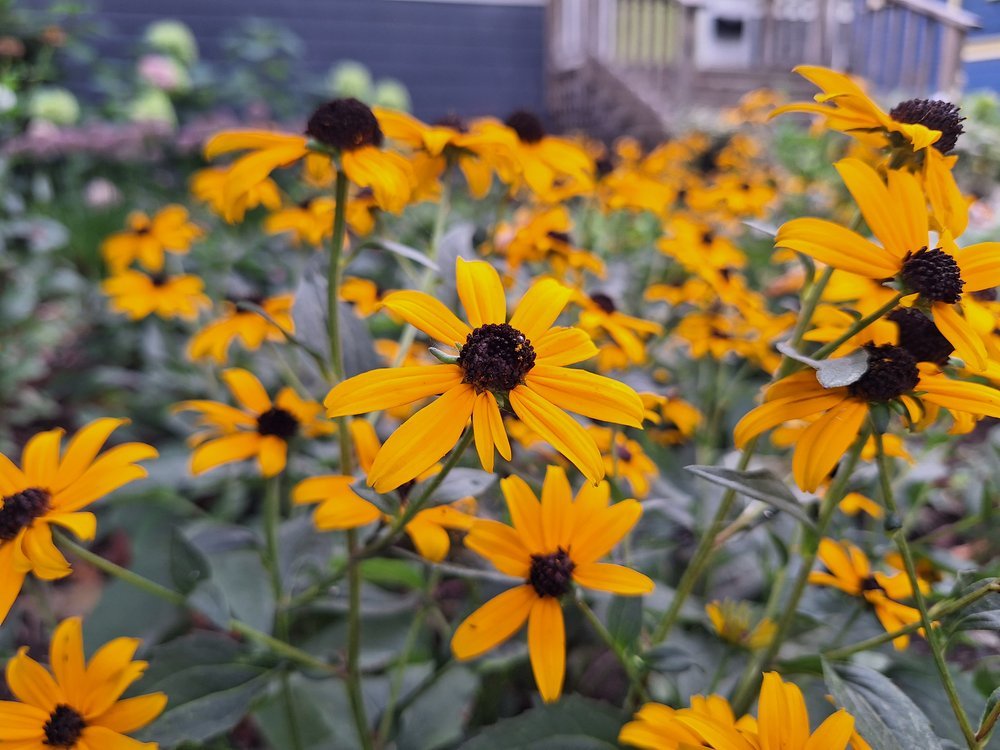Black-Eyed Susan
Black-Eyed Susan
Sullivant’s Coneflower
Orange Coneflower
Asteraceae
Rudbeckia
Rudbeckia fulgida
Common name(s)
Family
Genus
Full scientific name
The black-eyed susan, scientifically known as the Rudbeckia fulgida, is a captivating perennial that adds a burst of color and charm to any garden or landscape. This North American native plant features tall and slender stems, topped with striking daisy-like flowers in vibrant shades of yellow, orange, and red. What makes the black-eyed susan truly captivating is its cone-shaped central disc, composed of numerous tiny florets, creating a captivating spiral pattern that is both beautiful and intricate. Not only does the black-eyed susan possess exceptional aesthetics, but it also attracts a wide range of pollinators, including butterflies and bees, making it an invaluable addition to any pollinator habitat. Furthermore, this resilient plant has the ability to thrive in a variety of soil types and shows remarkable resistance to drought, making it a low-maintenance choice that effortlessly enhances the natural beauty of any outdoor space.
Growth form:
Wild flower
Maximum height:
60 cm
Light requirements:
Full sun
Type:
Perennial
Maximum spread:
45 cm
Water requirements:
Mesic
Drought tolerant:
Yes
Rabbit resistant:
Yes
Attracts wildlife:
Bees, humming birds
Butterflies, other insects
Native:
Yes
Deer resistant:
Yes
Bloom time:
Late summer to early fall












